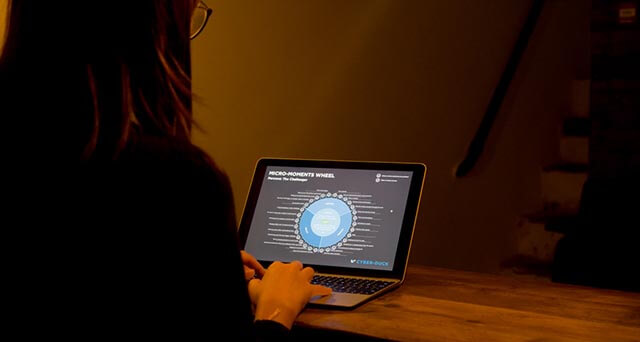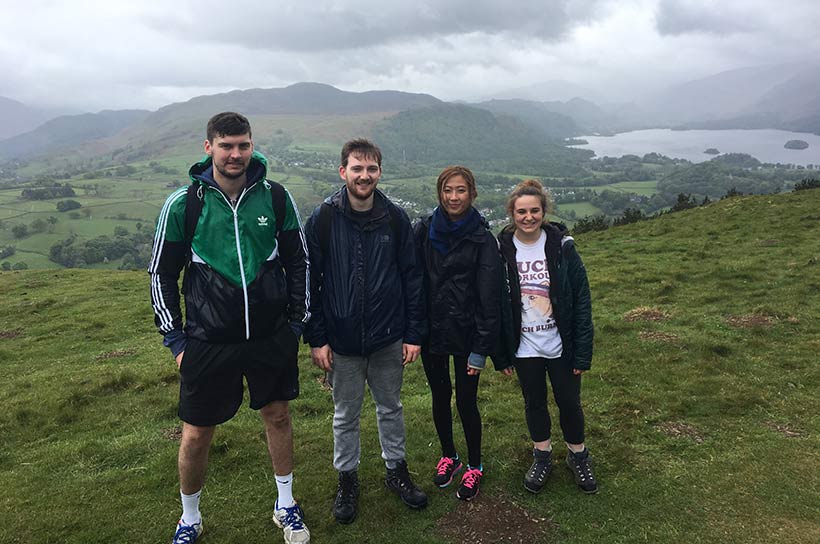Creating a marketing strategy can feel like a daunting dive into the dark. What’s the first step? Identifying the importance of micro moments and understanding your key customer journeys. Here’s how to create a micro moments wheel – the best way to map user interactions.
Micro-moments are a huge change in how we’ve traditionally understood user journeys. These are instances when a customer acts on a certain need or want. Customers aim to satisfy their curiosities and evaluate purchase decisions in the spur of a moment! Mobile has forever changed what we expect of brands. These devices now play a big role in answering their needs quickly. Read our previous article to find out how mobile has helped make customer journeys even more seamless.
Why is understanding and exploring a customer’s journey so important? By exploring a customer’s total experience, you can identify the touchpoints for interactions within each moment. This enables your business to make an informed decision on the next steps you can take to further improve these moments within the journey.
Why Make a Micro Moments Marketing Wheel
Producing visual maps is a particularly powerful way to explore and analyse your customer journeys as it visually ‘chunks’ and articulates the customer interaction. This gives marketers a far more digestible insight into the ‘moments’ of interaction. A micro-moment marketing wheel combines two powerful instruments from the branding and user experience world – storytelling and user journey mapping.
Conveying the customer experience as a full circle is very effective. A micro-moments marketing wheel can help you monitor a customer’s entire purchase process, from beginning to end. The wheel paints a visual story in your head.
You can identify exactly which moment a user is considering your brand over others, where a consumer might drop off and decide not to go forward, or where they become loyal to your brand. A micro-moment marketing wheel even explores what happens after a user has used your products and services, which helps you find new engagement methods.
How to Create Your Own Micro Moments Marketing Wheel
I’ll show you how to create your very own micro-moments wheel by using an example from a client. HF Holidays is a fantastic walking holiday company that specialises in guided and self-guided holidays all around the world.
We worked with HF Holidays to identify what happens before, during and after a trip that takes place. What key interactions might their customers have that sway their purchasing decisions? Once we identify these interactions we can build a number of themes (see next section) to help boost marketing tactics.
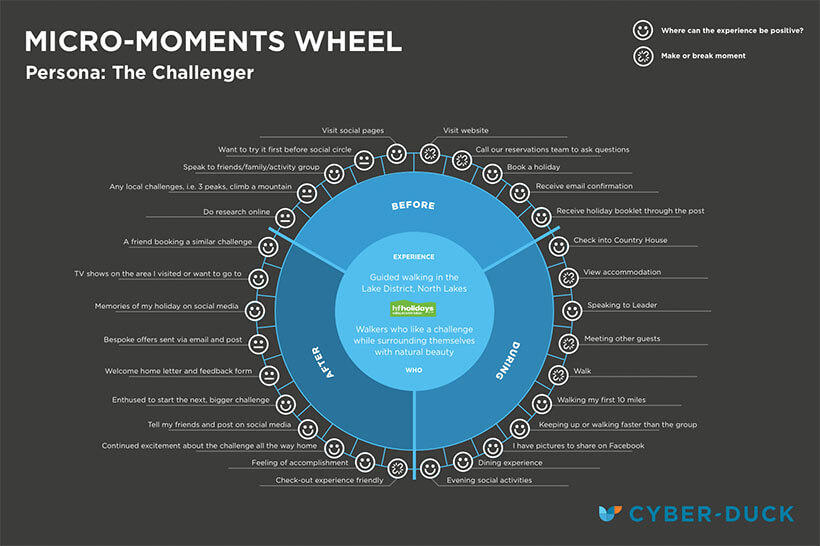
Here’s our micro-moments wheel – the best way to explore customer journeys! See the wheel in full.
Are you keen to get going with building a micro-moment wheel for your own customer journey? Download your free template to build your own.
Where Do I Start?
DO YOU KNOW YOUR SUBJECT?
The first step to create the wheel is to identify your personas. All businesses should have persona buyers to understand who you should be selling to. For example, you wouldn’t be selling meat in a vegetarian market. So, you would want to align your marketing strategy to the right demographic market.
To create this wheel, you should focus on one persona at a time. One of HF Holidays’ main personas is ‘The Challenger’, which was identified through prior persona research. These customers love a good challenge and enjoy sharing their achievements with others. If you don’t already have personas, this is the time to start identifying them.
HF Holidays invited their Cyber-Duck team on a trip! It gave us plenty of ideas about how to engage walkers.
WHAT IS YOUR SCENARIO?
Decide what the scenario is here. Is your persona going to a restaurant? Are they thinking of getting a pet? Once you’ve decided on the scenario, map out the specific experience from start to end or work with your client to identify every micro-moment in specific detail. In our wheel, we are focusing on a ‘challenger’ persona going to the Lake District in the UK.
To make things easier, break the scenario down into 3 parts. Each section will finally form a circle – matching our ideal repeat customer behaviour!
Before: this is the moment where your persona starts to take an interest in your service. Map out every moment here. With HF Holidays, it starts from the moment a (potential) customer starts doing their research online, to the moment where they decide to book a trip with them.
During: at this stage, your potential consumer has converted and become a customer. List everything that happens at this stage. In this example, this starts from the moment our persona goes on their holiday, from checking into accommodation to walking activities. Be as detailed as possible. But remember to only add the moments which add value to your business.
After: at this stage, your customer has used your service. In our example, the persona has completed their trip. This stage is still important as you want to map out the micro-moments that can retain your customer’s happiness. Little gestures like sending a welcome home email or engaging with them on social media can make the entire experience better – which then leads to brand loyalty.
WHAT ARE YOUR TOUCHPOINTS?
Next, the interaction happening within each micro-moment of your business should also be pointed out here. This forms the outer circle of the wheel – more like the rims if you will. Mapping this out could identify potential positive and negative experiences within that moment.
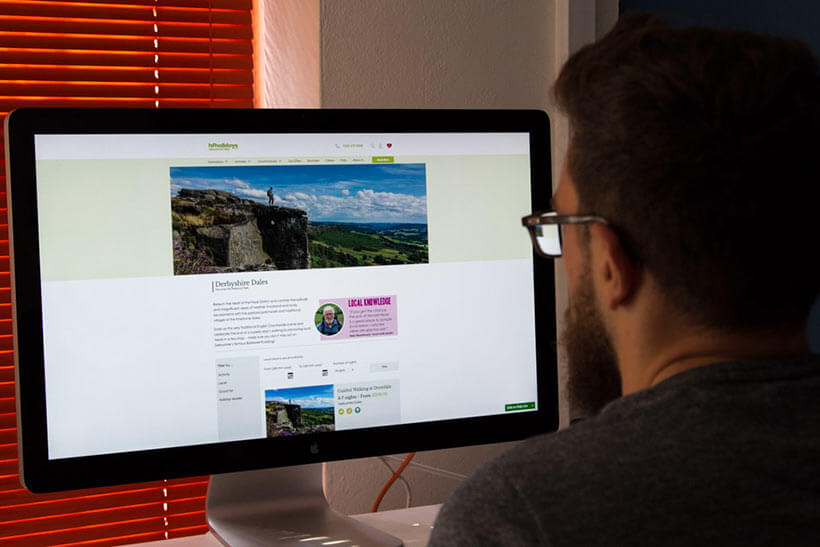
How could HF Holidays stand out to one of their customers, comparing loads of walking sites?
For example, the smiley face on ‘Visit Social Pages’ means that there is a potential to further develop the experience into something better – this could mean having your social media profiles to be more informative or engaging with your customers.
ARE THERE ANY MAKE OR BREAK MOMENTS?
Identify which moments within the journey that could change the perception of the brand. This specific moment could either turn your customer loyal, making them come back for more or completely drive them away, leaving them with a poor perception of the brand.
In our example, accommodation was identified as one of the make or break moments – a well-equipped and comfortable hotel room will mean a customer is more likely to return, whereas a poor one means this could be the moment where the customer decides that it is a deal breaker.
Improve Your Marketing Tactics
Studying your wheel can help you discover themes of interest for each persona group, which then spark potential content and nurturing ideas for marketing strategies.
For example, by observing this wheel, we identified two key themes for the Challenger Persona – social walking and natural beauty. They enjoy a good challenging walk. But at the same time, they love surrounding themselves with good company and mother nature! What tactics could we use do to develop curiosity, purchase and loyalty?
We could cater to this theme by coming up with more facilities, activities or even content. There are many ways to gather ideas and inspiration – brainstorm sessions, pinning articles as you go along, looking at Google Trends… But Answer The Public and Uber Suggest are my favourites. These tools help you identify the questions and queries that people are asking on Google and more. They are really helpful when identifying the best topics for content. To show you how each of these tools work, I entered ‘Lake District’ to tie in with natural beauty on Answer The Public and ‘Social Walking’ into Uber Suggest.
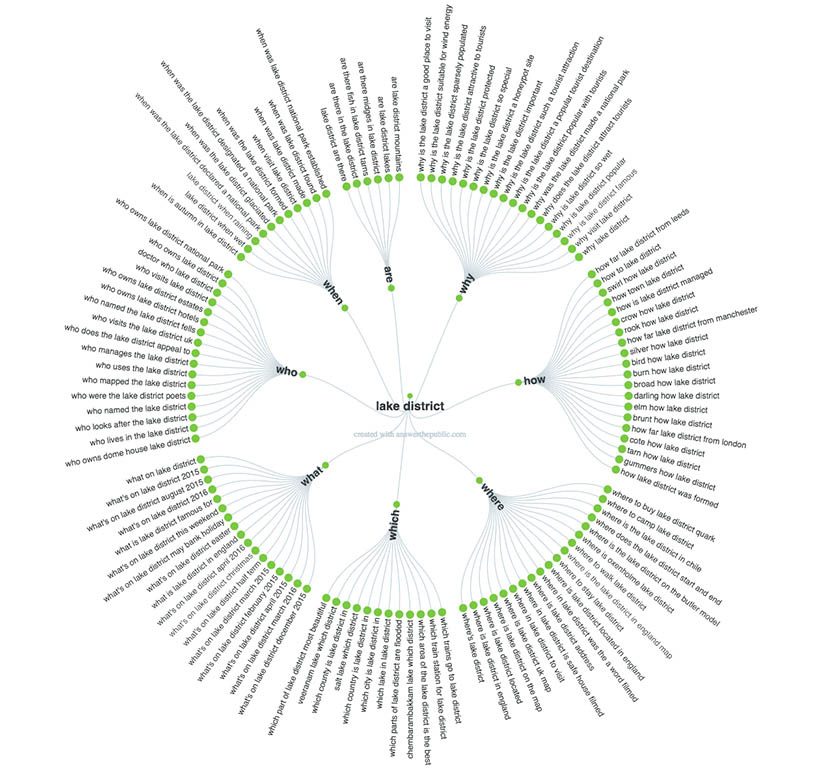
Answer the Public generates a mind map of questions (sorted by the classic who, what, why...) if you use a broad term.
As you can see, the suggestions here were endless. Of course, not all of them were relevant but the results can help me think of tailored content for the website e.g. ‘why was the Lake District made a national park’? Or ‘what are the social benefits of group walking in the Lake District’?
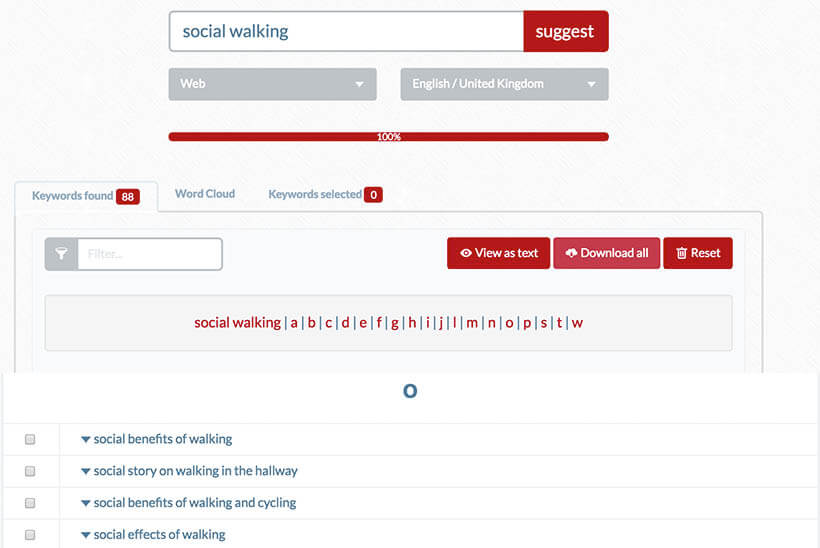
Uber Suggest returns ideas in topics instead, sorted alphabetically.
More than this, it even helps fire campaign ideas that could cater to this sort of persona e.g. ‘why is the lake district so important?’ or ‘why is social walking so important?’. Imagine the sort of results that you can achieve, just by identifying a theme!
If this content successfully convinces a customer to go on a new trip, they would move on to the ‘during’ phase of the micro-moment wheel. Reviewing that part of the wheel should help you further identify all the moments that happen within the trip and how you could improve their experience. For example, we could send a simple email campaign or text to congratulate a Challenger walker once they’d completed a walking route on the trip.
At the end of the trip, we could encourage the challenger persona to share pictures of their trip on social media. Now, they’ve officially gone full circle – it’s back to the ‘before’ section of the wheel to try and convince them to take another trip.
Let's Take a Moment
We hope our micro-moments wheel will help you understand and act upon insights about your customer journeys. Get in touch if you would like to help with making more moments effective during your marketing strategy. Download your free template to get going with creating your own micro-moments wheel.

